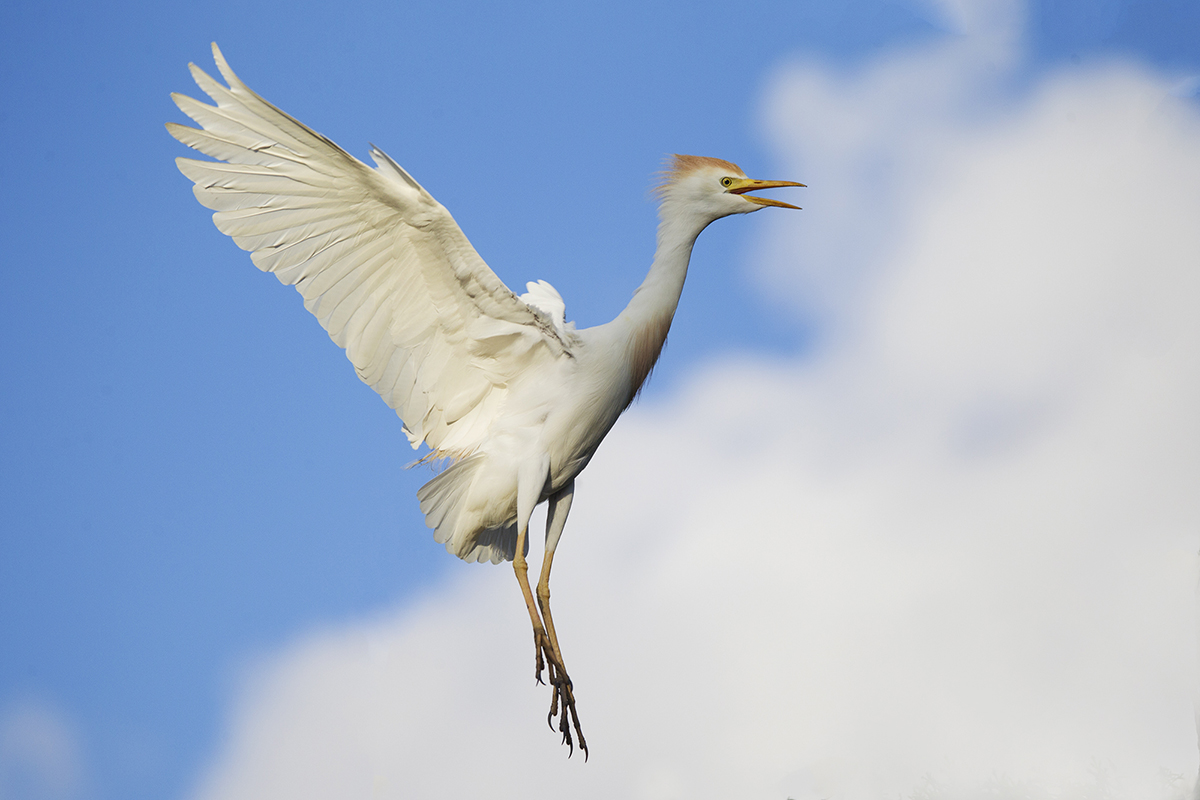Winging It
Dan Walters documents flying friends in their natural habitats with his Tamron 100-400mm VC and SP 150-600mm VC G2 lenses.
More Photo Tips | Video Gallery | Photo Gallery | Enewsletter sign-up
By Jenn Gidman
Images by Dan Walters
When Dan Walters first started taking pictures, he was intrigued by photojournalism and sports photography, and one of his instructors at Denver’s Metro State University was able to get him into Denver Broncos and Nuggets games to practice shooting. Soon after, however, he acquired a Tamron 300mm F/2.8 lens and took it up on Mount Evans for a test run, taking pictures of mountain goats—which is when he realized he also had a penchant for wildlife photography. “I’ve always enjoyed hiking up into the mountains, so it seemed like a perfect fit with my picture-taking passion,” he says.
In the years since, Dan has immersed himself in wildlife photography, including bird photos, often heading out onto Colorado’s prairies and peaks to find subjects for his portfolio. “We have such a wide variety of habitats here,” he says. “For example, I can head up into the mountains to photograph white-tailed ptarmigans, or wait till the summertime, when birds that migrate here like the American avocet and blue heron are abundant.”
Dan’s lenses of choice on his outdoor adventures: the Tamron 100-400mm VC and SP 150-600mm VC G2 lenses. “I borrowed the 100-400 last year for the Birding and Photo Fest in St. Augustine, Florida,” he says. “It’s super-lightweight and very fast. It was the perfect lens for taking photos of birds in flight.”
Lately, however, Dan has been relying on the 150-600. “I appreciate its light weight as well, and that it’s very easy to shoot handheld with, which I do most of the time because I can move around more easily to follow my subjects if I’m not lugging around a tripod,” he says. “With the Vibration Compensation feature, I can handhold at, say, 1/30th of a second, and the images still come out really sharp. Plus, having that zoom range is crucial when I’m photographing birds in flight. With a fixed 500mm lens, if a bird flew too close, I would end up clipping the wings in the image. The 150-600 allows me to zoom in and out so that I can always capture the full bird in my frame.”
When he’s scanning the skies, plains, or lakes for subjects, Dan’s goal is to document action at its peak. “I want to capture the birds’ behavior, because I’ll almost always achieve a more dynamic shot that way,” he says. “Of course it’s great to complement those shots with portraits of birds sitting on a perch basking in perfect light, but it’s much more fun to capture birds acting the way they usually act.”
Dan prefers to head out early in the morning or in the later afternoon to take his bird photos. “Not only are they more active at those times, you’ll also get a more even, dramatic light illuminating the bird, without shadows under the wings like you’d get if you shot midday,” he says.
To find the ideal backdrop for your bird photos, Dan suggests regularly visiting local parks or animal sanctuaries to study the lighting, backgrounds, and subjects. “The more you frequent a place, the better you’ll be able to gauge when and where your soon-to-be-subjects are most active, and what backgrounds will work best with your images,” he says.
Dan uses continuous autofocus for his birds in flight, making sure his shutter speed is set to at least 1/3200th of a second, with a slightly higher ISO. “I typically shoot everything in manual mode, especially for very active birds, and simply pay attention to the light around me so that my exposure stays fairly constant,” he says.
The reach of his two Tamron lenses allows Dan to be as unobtrusive as possible, especially around more nervous species. “Some birds are really skittish, and so being able to stay a good distance away is optimal,” he says. “My 100-400 and 150-600 still help me achieve sharp images from afar. Other birds, meanwhile, don’t care that you’re there and will walk or fly right by you—though that can change in some cases as the birds mature. Red-tailed hawks, for instance, aren’t that jumpy when they’re young; they’re more curious about you. As they age, however, that curiosity wanes. They just want to get their food and get out of there.”
Read on to learn about some of the creatures Dan has photographed with his Tamron 150-600mm and 100-400mm lenses.
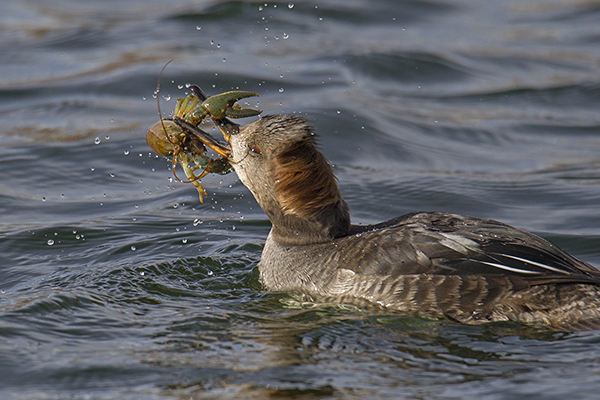
150-600mm (600mm), F/7.1, 1/2000th sec., ISO 800
Click image to view larger
Hooded mergansers usually show up here in Colorado in droves in the wintertime, and they love to catch and eat crayfish. There’s a level of patience you need to get this kind of shot, because nine times out of 10, when they dive under the water in hunt of food, they come up empty. But when they do pop up with one, they’ll shake the crayfish so that its big front claw comes off, then swallow it whole. I managed to capture this one mid-shake, with those water droplets splashng everywhere.
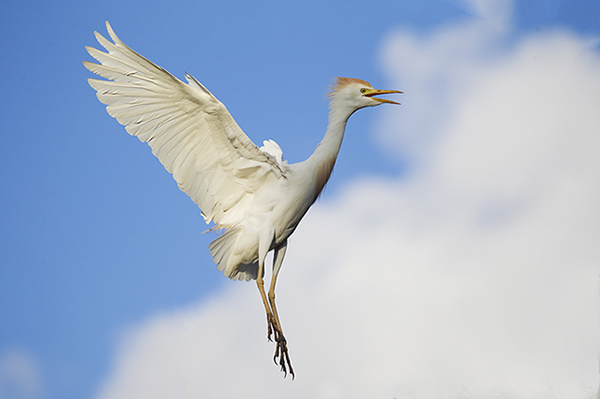
100-400mm (269mm), F/5.6, 1/1600th sec., ISO 400
Click image to view larger
This photo of a cattle egret was the one picture in this set where I tapped into the 100-400mm lens. I always try to incorporate clouds into my backgrounds whenever possible, as it helps break up the image somewhat. Some days there isn’t a cloud in sight and it’s beyond my control, but on this day I got what I was looking for. I was able to achieve a more dynamic image because I caught the egret as it was landing, with its wings extended and its feet out to stick the landing. The fact that it opened its bill as I was shooting was just lucky timing.
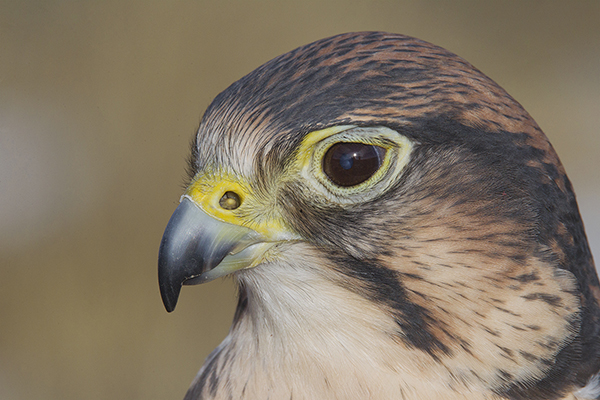
150-600mm, F/16, 1/800th sec., ISO 800
Click image to view larger
I wanted to experiment with the different focal lengths of the 150-600. This lanner falcon was in captivity, so that gave me the opportunity to just let it be my subject. I took its picture in the early morning, so the low light was able to reflect in its eye. I couldn’t believe how sharp the image turned out. I’ve magnified it to 200% and it still looks amazing, with every detail popping out of the screen.
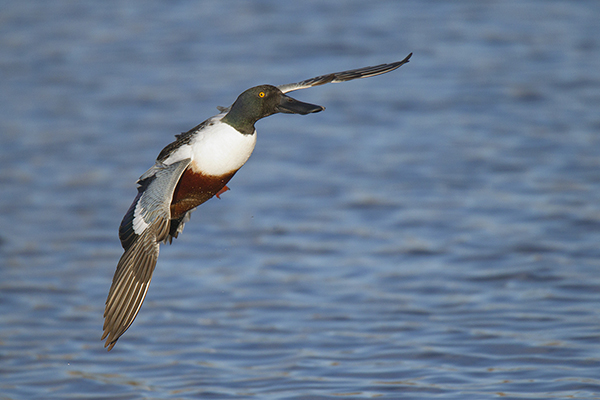
150-600mm (600mm), F/6.3, 1/5000th sec., ISO 800
Click image to view larger
There are a lot of northern shovelers at the local park near me, especially in the wintertime. What these birds will do in the water is kind of leapfrog over each other, to get a better position so they can see better before landing back in the water. That’s what this one was doing here. What I love about the versatility of this lens is that I’m able to zoom in and out so that I can always capture the full bird in my frame and not clip its wings.
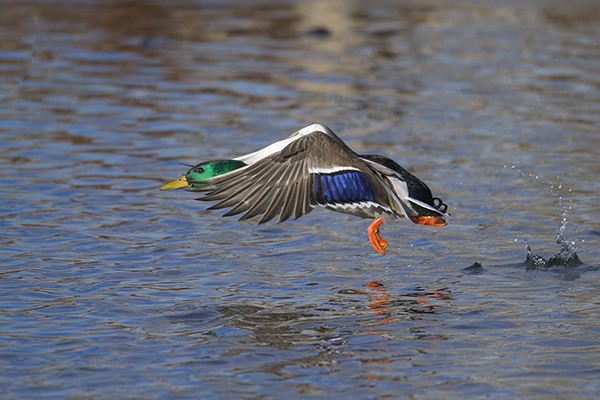
150-600mm (600mm), F/6.3, 1/4000th sec., ISO 800
Click image to view larger
This photo of a mallard is a good example of honing your ability to anticipate a bird’s behavior. I knew this one was about to take off just by the way it was sitting in the water, because I’ve seen this action so many times. I tried to position myself on the shore so there would be more space on the left-hand side of the frame and I wouldn’t clip the duck in my frame as it flew from right to left.
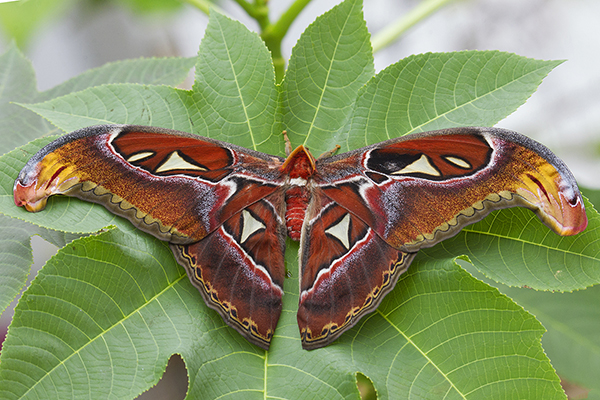
150-600mm (250mm), F/8, 1/100th sec., ISO 1000
Click image to view larger
I wanted to try using the 150-600mm G2 for some macros, so I headed over to a local butterfly pavilion. This atlas moth, which measured about 8 inches across, happened to be sitting on that leaf, and it remained there for quite a bit of time. I’d never seen a moth like this, with the color and details in its wings. Even handholding at that close range, I was able to capture such a sharp image with the 150-600.
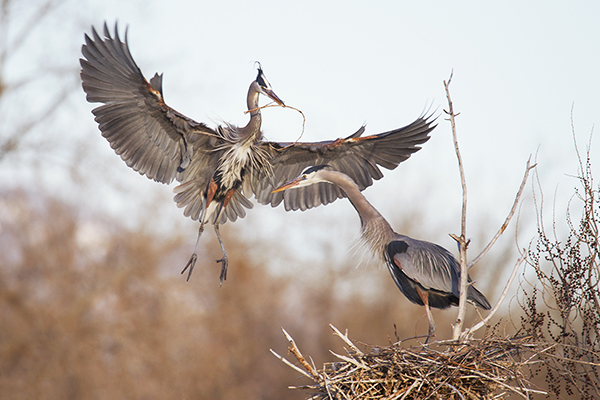
150-600mm (600mm), F/6.3, 1/400th sec., ISO 400
Click image to view larger
These blue herons are working on their nest. The male will head out to gather some sticks for their abode, then fly back in—and as he does so, the female will typically start standing up. It’s pretty easy to predict their behavior at this key moment. Capturing that behavior creates more of a dynamic image. So I simply focused on the nest and waited. As the heron swooped in, I just started taking pictures. I didn’t have to change my focus at all.
To see more of Dan Walters’ work, go to www.danwaltersphoto.com.
More Photo Tips | Watch Videos | Learn More About Tamron Lenses | Photo Gallery
